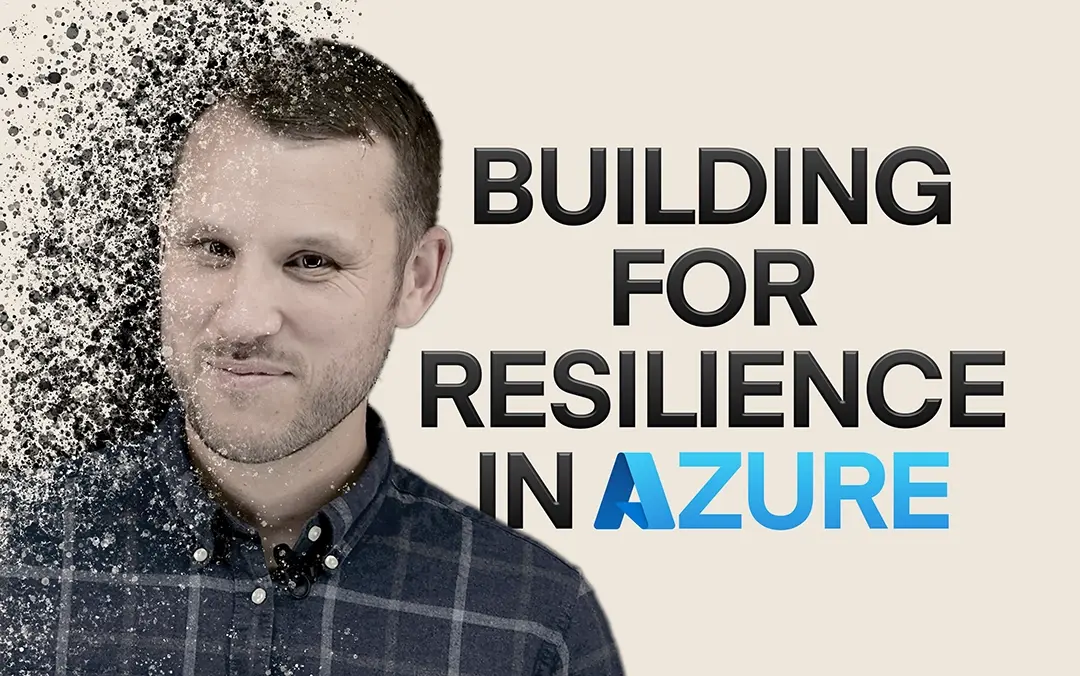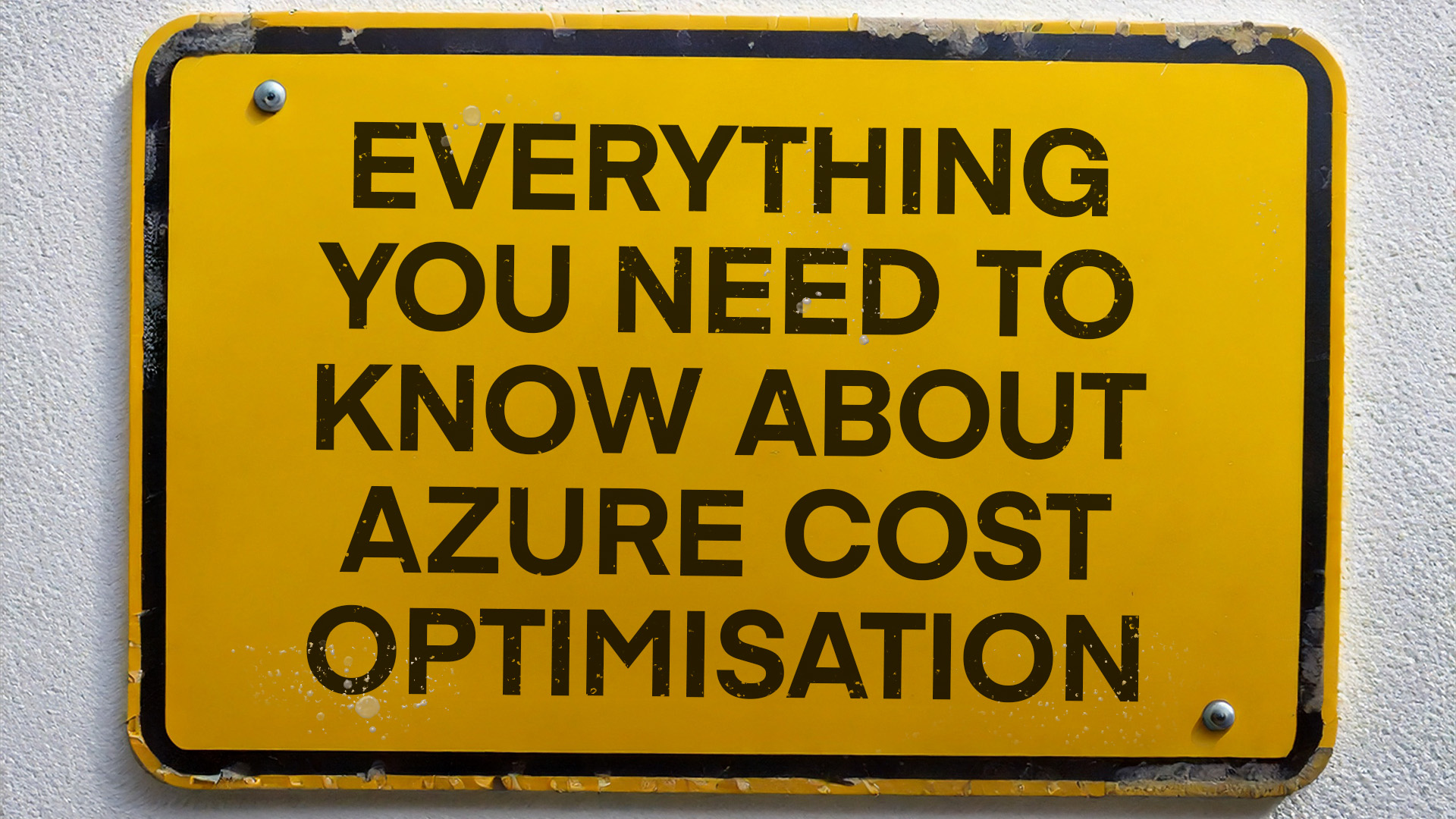The importance of resilience in Azure
So why is resilience important?
Well, no business wants their systems to go down or their data to be lost. Outages are disruptive, costly, and damage trust with clients.
Creating a resilient Azure environment protects your organisation from these risks and guarantees that essential services remain available, even in the face of potential failures.
That said, one common misconception is that Azure is inherently resilient. Not quite—simply migrating to Azure doesn’t automatically make your systems fail-safe. Matt says:
“Azure doesn’t guarantee resilience on its own. It gives you the tools… but it’s up to you to configure them effectively.”
If you build in resilience from the start, you’ll reduce the likelihood of interruptions and be better prepared to manage unexpected issues. Let’s take a look at the different ways in which we can do this.
Redundancy – protecting against failures
Redundancy is the first line of defence in Azure resilience, making sure that if one resource fails, another is available to maintain functionality.
Here’s how you can set up redundancy in Azure using availability sets and availability zones.
Availability sets
Availability sets are the most basic level of redundancy in Azure for virtual machines (VMs). With availability sets, you run two or more identical VMs, grouped to prevent them from relying on the same physical resources, such as power, cooling, or network.
The key here is that the servers are never running in the same rack. This protects against rack-level failures, like power outages or hardware maintenance.
When you configure your VMs in an availability set, Azure spreads them across different update and fault domains. This approach minimises downtime during maintenance and protects against failures in individual racks, which would only affect one of your VMs. Availability sets offer a 99.95% SLA for VMs, compared to a standard VM’s SLA of 99.9%.
Availability zones
For a higher level of redundancy, you can use Azure availability zones. Each Azure region is divided into multiple data centres, known as availability zones, which are connected by a high-speed network but operate independently with separate power, cooling, and network connections. Setting up your VMs across multiple availability zones means that if one data centre goes offline, the others remain operational.
So, for example, if you were running a VM and lost one data centre, a backup virtual machine could start running within another availability zone. Availability zones provide a more robust failover solution than availability sets, but there is an additional cost since you’re running multiple instances in different data centres. However, the added resilience can be critical, especially for workloads requiring high availability.
High availability – keeping services active
While redundancy means that backup resources are in place, high availability (HA) is about maintaining uninterrupted service by balancing workloads across multiple regions.
Designing your Azure environment with HA in mind, you can keep critical services running smoothly even if one location or resource goes offline.
One common HA setup in Azure is to use load balancing across regions. For example, if you have two web servers running in different regions, (like UK South and UK West for example), you can use Azure Front Door to balance traffic between them.
With load balancing, if one server needs maintenance or goes offline, all traffic is automatically directed to the other server. This allows you to take one server down for updates without impacting users, as they’re quickly rerouted to the active server.
To achieve high availability, we recommend using active-active configurations across regions. By running identical services in parallel (such as two web servers in different regions), you can make sure users won’t experience downtime if one instance fails.
That said, bear in mind that this setup incurs additional costs for running resources in multiple regions and might need extra configuration to align with your application’s needs.
Disaster recovery – preparing for the unexpected
Disaster recovery (DR) is your last line of defence when all else fails. Its mission is to help you restore your Azure environment quickly and minimise downtime in the event of a severe disruption.
DR setups typically involve maintaining a backup of your entire system in a secondary location, ready to take over if the primary environment becomes unavailable.
In Azure, you can use Azure Site Recovery (ASR) to replicate your environment from one region to another. Think of ASR as a constant replication service. For example, if your primary region is UK South, ASR can replicate your data to a recovery vault in UK West. This enables an RTO (Recovery Time Objective) as low as 30 seconds and allows you to store multiple recovery points, so you can restore your environment to its exact state at any recent time.
While ASR offers a strong DR solution, you’ll definitely want to regularly test your failover process to ensure everything will work as expected in a real disaster. It’s no use having DR if you don’t test it.
Thankfully, with Azure’s testing capabilities, you can perform test failovers to verify that backups are complete, firewall rules are accurate, and networking configs are correctly set. These tests help you confirm that everything is ready to go should a disaster occur, reducing your stress levels and minimising the risk of issues during a live failover.
Testing and maintaining DR plans can feel like extra work, but it’s nothing less than essential. In our view, without disaster recovery, you’re risking everything.
Building resilience into your Azure setup from the ground up is what you need for an environment that can withstand anything—from minor outages to major failures.
Backups – your final line of defence
In any resilient cloud environment, backups make for a critical safety net.
Even with redundancy, high availability, and disaster recovery in place, regular backups mean that you can always restore data if something goes wrong. Azure Backup offers multiple backup solutions for virtual machines, databases, and files, creating recovery points that you can use to restore specific data or entire systems.
In a typical Azure setup, backups are stored in a recovery vault. This vault can be configured to hold backups in multiple data centres, protecting your data even if your primary region experiences a full outage. “The great thing about Azure backups is they aren’t just for full system restores,” Matt explains. “You can go down to file-level recovery, retrieving specific files and folders if needed.”
To prevent any accidental or malicious deletions, backup immutability is what you need. This feature locks backups in the vault for a defined period, so even if someone with administrative access tries to delete them, they remain intact until the retention period ends. So, for example, if you’ve set a one-year retention, any backups are protected against deletion for that full year, giving you peace of mind that your critical data is safe.
Common pitfalls in Azure resilience
Even with the best intentions, resilience setups in Azure can sometimes miss the mark. Matt highlights a few frequent missteps he’s seen in Azure environments, along with practical ways to avoid them.
- Manual processes: Manual configuration is a common source of error in resilience planning. When backup policies or availability configurations are added manually, mistakes are easily made—an incorrect retention policy, a forgotten backup, or a misconfigured rule can all create vulnerabilities. As Matt puts it, “Relying on manual steps for critical resilience functions is just asking for trouble.” His recommendation? Automate everything you can using tools like Azure Policy, which ensure your resources are correctly configured and flag any issues before they become problems.
- Single points of failure: If there’s a single point of failure in your architecture, it’s a problem waiting to happen. Redundancy is essential to make sure a failure in one part of your system doesn’t affect the entire setup. If you identify and address these points, whether in your network, VMs, or storage, you can build a resilient architecture that keeps your services running nicely.
- Insufficient DR testing: Disaster recovery plans are only as good as their last test. Unfortunately, many organisations set up DR and assume it’ll work without verification. We can’t understate the importance of testing regularly to keep all configurations, network rules, and recovery points up to date. If your DR plan hasn’t been tested, it’s just theory. If you perform test failovers, you can make sure your team is ready to respond quickly and effectively when needed.
Final thoughts
So, let’s put this all together. A resilient Azure setup looks like this:
- Redundancy at every level
- High availability built into your design
- Fully automated and tested disaster recovery
When you design for resilience from the ground up, your Azure environment will be prepared for anything—from small hiccups to full scale failure.
Azure isn’t resilient by default, but by understanding the tools available and building with them in mind, you can make sure your environment is rock solid.
Looking for more guidance on keeping your Azure infrastructure safe (or building from scratch)? Get in touch today and our elite team of Azure specialists will be happy to help.





